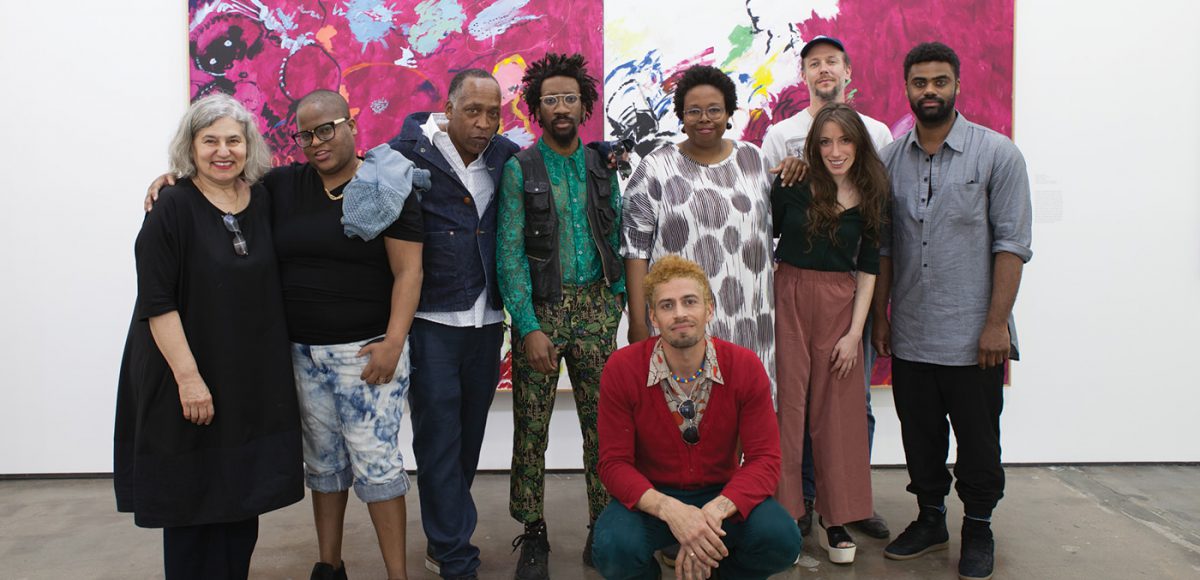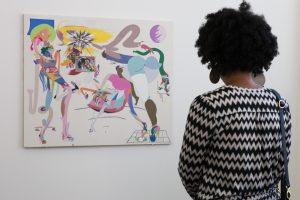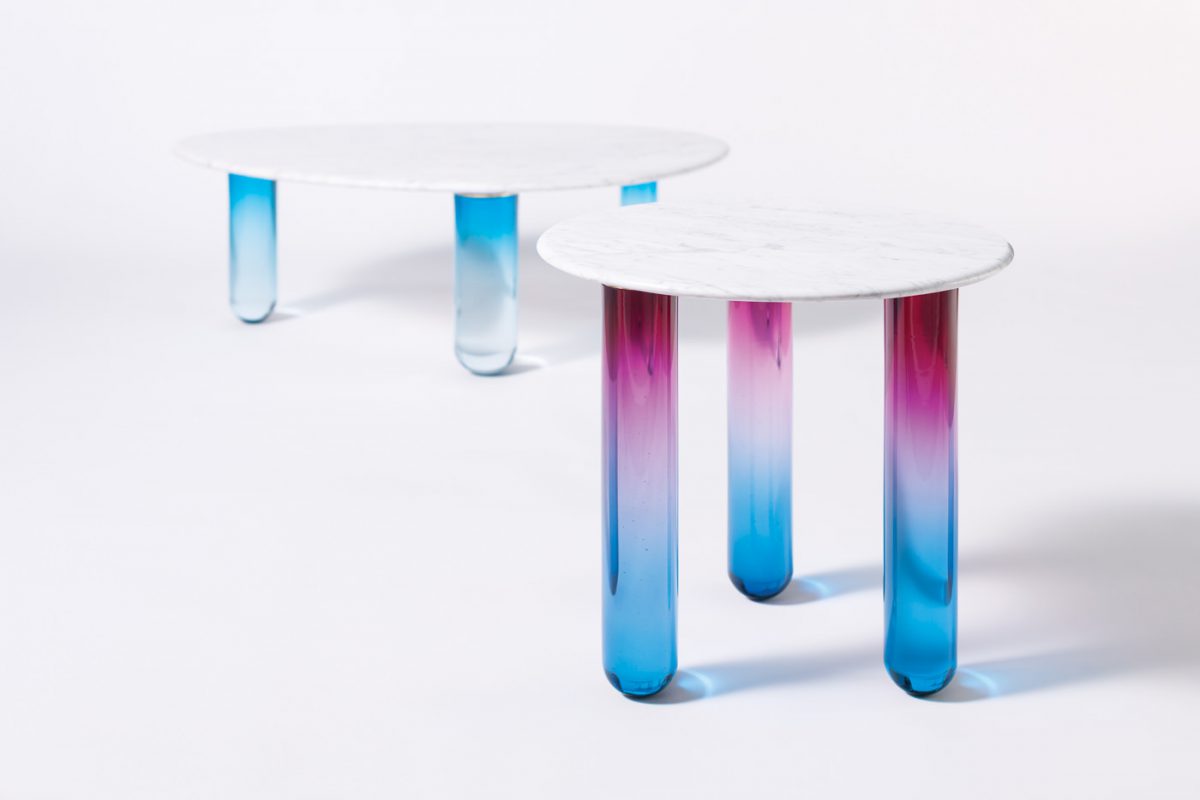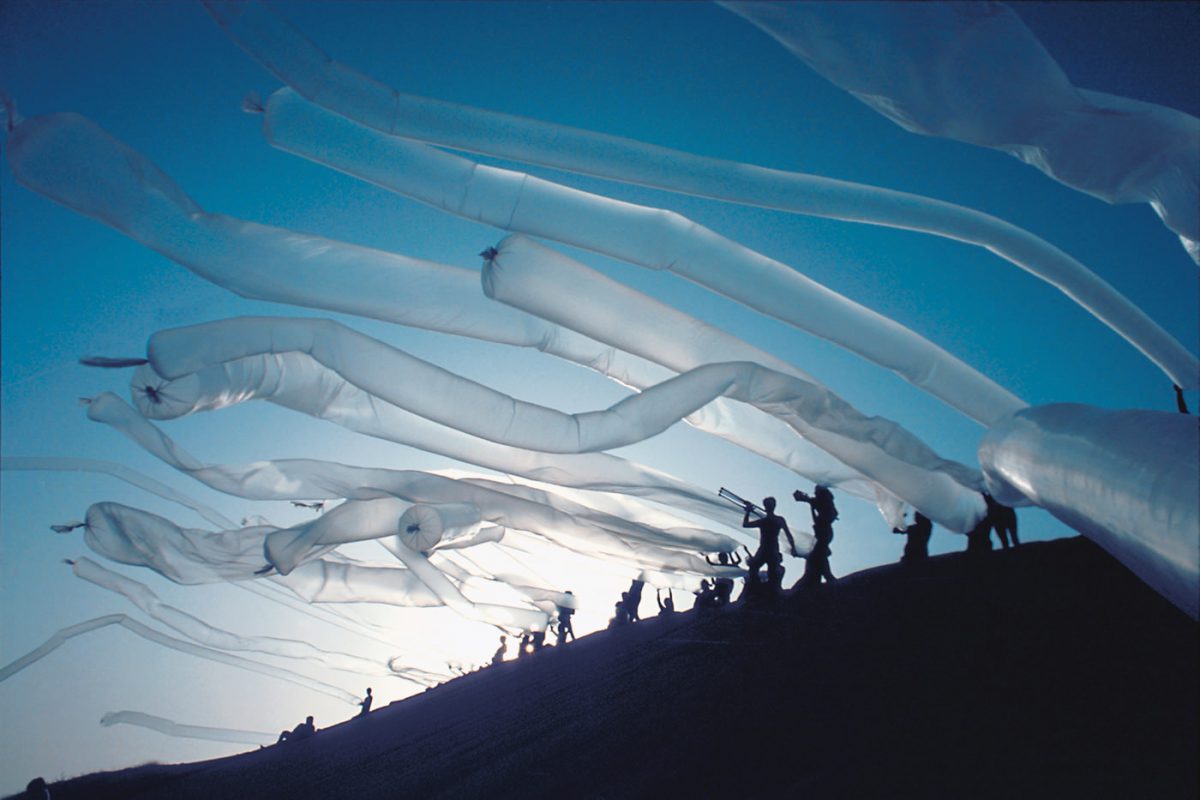Much of the buzz surrounding Leimert Park either starts or ends with Mark Bradford’s Art + Practice. While this is not particularly surprising, it can be misleading in the sense that the neighborhood, a vibrant bastion of African American cultural expression, has a significant history that predates the genesis of Art + Practice and has much to negotiate in the wake of its opening. Leimert Park’s “revival” should more accurately be viewed as one chapter in a longer cultural story.
The neighborhood, located in South Central Los Angeles, was a master-planned community developed in the 1920s. Its central gathering place was Leimert Plaza Park, which then, as now, was a colorful, ebullient communal space for music, art and conversation. Once the racial covenants excluding non-white buyers were ruled unconstitutional in the 1940s, the relatively small neighborhood attracted middle-class African American families. The area began to earn its reputation as an African American cultural enclave in the aftermath of the Watts riots of 1965. Both Ella Fitzgerald and Ray Charles lived there for a time.
One of the most notable early events in the artistic history of the Village (as it came to be called) was the founding of Brockman Gallery by brothers Dale Brockman Davis and Alonzo Davis in the 1960s. The gallery was conceived as a space for African American artists to show and see work, which was increasingly difficult after the Los Angeles County Museum of Art split from the Los Angeles Museum of History, Science and Art and relocated to Miracle Mile from Exposition Park, far from where these artists lived and worked. It had the notable distinction of being the first African American-owned commercial gallery, showing work by David Hammons, Samara Wiley and Noah Purifoy. Although it closed in the 1980s, its proprietors are still very much a part of the community; Brockman Davis is one of the first artists to use the residency space at Art + Practice.
Like many neighborhoods in South Central L.A., Leimert Park suffered economically after the 1992 riots and unrest, although it was spared the physical destruction of property experienced in other areas. That did not mean that its cultural spirit dissipated, however; the 1990s was a vibrant time for the arts. Jazz cafes, dance studios, coffee shops, theaters and a museum dedicated to African American history filled the colorful storefronts. The famed Zambezi Bazaar opened in 1991. A curated retail space focusing on African arts and crafts, it was also a center for lectures, artist receptions and political dialogue.
The 2010s also brought arts opportunities to the neighborhood. In 2009, Los Angeles-based artist Kenyatta A.C. Hinkle began her project, Kentifrican Museum of Culture: Re-Imagining Identity, in which she explored the cultural ties between Kentucky and West Africa. The museum manifested itself in many forms and places, but in 2014, Hinkle brought it to the Village. The famed African American bookstore Eso Won Books, run by James Fugate and Tom Hamilton since the 1980s, moved to Degnan Avenue in 2006 (it has since moved into a space at Art + Practice). The small store is one of Los Angeles’s great literary spaces, frequently hosting notable authors and events.
Before Art + Practice, there was Papillion Gallery, opened by Michelle Papillion in 2014 in Brockman’s former space. Leimert Park might seem like a risky place for a new gallery venture, given that there were—and are—few contemporary art galleries nearby, but Papillion was not deterred. “When I started I didn’t have many concerns and I didn’t feel like I was taking a risk. I was just doing something I wanted to do,” she said, while pointing out, “now it seems ‘doing what you want to do’ can be risky!” However, Open, the inaugural exhibit, was well-attended and critically acclaimed, and the gallery is now considered a core cultural space in the neighborhood. Papillion explains, “I plan on being in Leimert Park for as long as it makes sense for me to be here. I love this neighborhood; it’s been good to us and we to it.”
The same enthusiasm for Papillion greeted Art + Practice, which opened its doors in February, 2015. Conceived of by philanthropist Eileen Norton, artist Mark Bradford, a MacArthur genius grant recipient who grew up in the neighborhood and has his studio there; and Allan DiCastro, Bradford’s partner and former president of the Mid-City Neighborhood Council, the complex features exhibition space (its first show featured the work of Charles Gaines, and was organized in partnership with the Hammer Museum), art studios, space for Eso Won, and offices for the RightWay Foundation, which provides social services for young people aging out of the foster system and vulnerable to living on the streets. The opening of Art + Practice and the debut of the Gaines show was a star-studded affair that brought out Mayor Garcetti as well as major art world figures.
On view through June 8, A Shape that Stands Up, is a Hammer Museum off-site exhibition curated by Jamillah James. This survey of paintings, drawings and sculpture founded in figurative abstraction features the work of established and emerging artists. James told Fabrik that the Hammer is committed to further work with A+P: “Leimert Park has long been an incubator and anchor for the arts in Los Angeles, and in its partnership with Art + Practice, the museum has been able to continue its involvement in the neighborhood.”
Art + Practice has been justifiably praised as a welcome addition to Leimert Park. The fact that it was founded by people who have either lived or worked there, and that Bradford and DiCastro financed a great deal of it with their own funds, seems to augur good things. The future Village Metro stop along the Crenshaw line, slated to open in 2019, only adds to the sense that the neighborhood is shaping up to be a destination for arts-and-culture seekers.
Of course, like many Los Angeles neighborhoods, Leimert Park has a complicated relationship with the forces of gentrification. While those seeking to revitalize Leimert Park seem to be demonstrating a great deal of respect for the uniqueness of the neighborhood, there are still questions about future development. Concerns about the Metro stop were voiced over the past few years, as well as the general plans Art + Practice, the current heavy-hitter, has for the area. It isn’t difficult to predict rising prices and instability of rents; Zambezi actually closed and relocated for this reason.
Such questions and concerns, while valid, should be considered in light of the positive changes in Leimert Park. Art + Practice, as James says, “offers a new model for arts organizations who want to serve their communities in a tangible way, beyond access to the visual arts,” which actually places it firmly in the tradition of its neighborhood forbearers. Leimert Park’s future will not be that of other contemporary art neighborhoods if it continues its commitment to embracing its history, its culture and its community.












